Live Images
The easiest way to try it out is with a live image booted off a USB disk. Docker images also provide a quick and easy way to test Plasma.
Download live images with Plasma Download Docker images with Plasma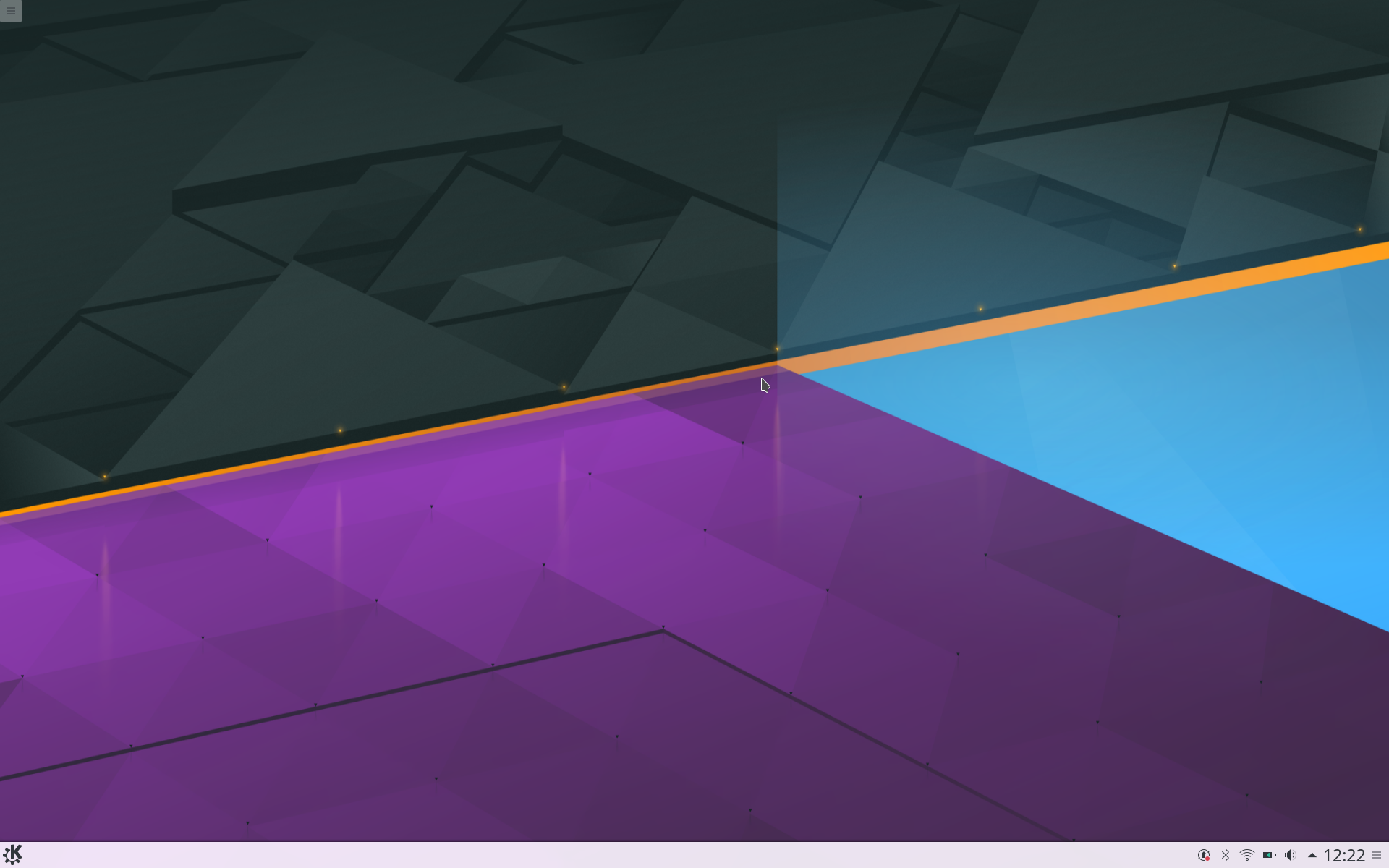
KDE Plasma 5.7
Tuesday, 5 July 2016
Today KDE releases an update to its desktop software, Plasma 5.7.
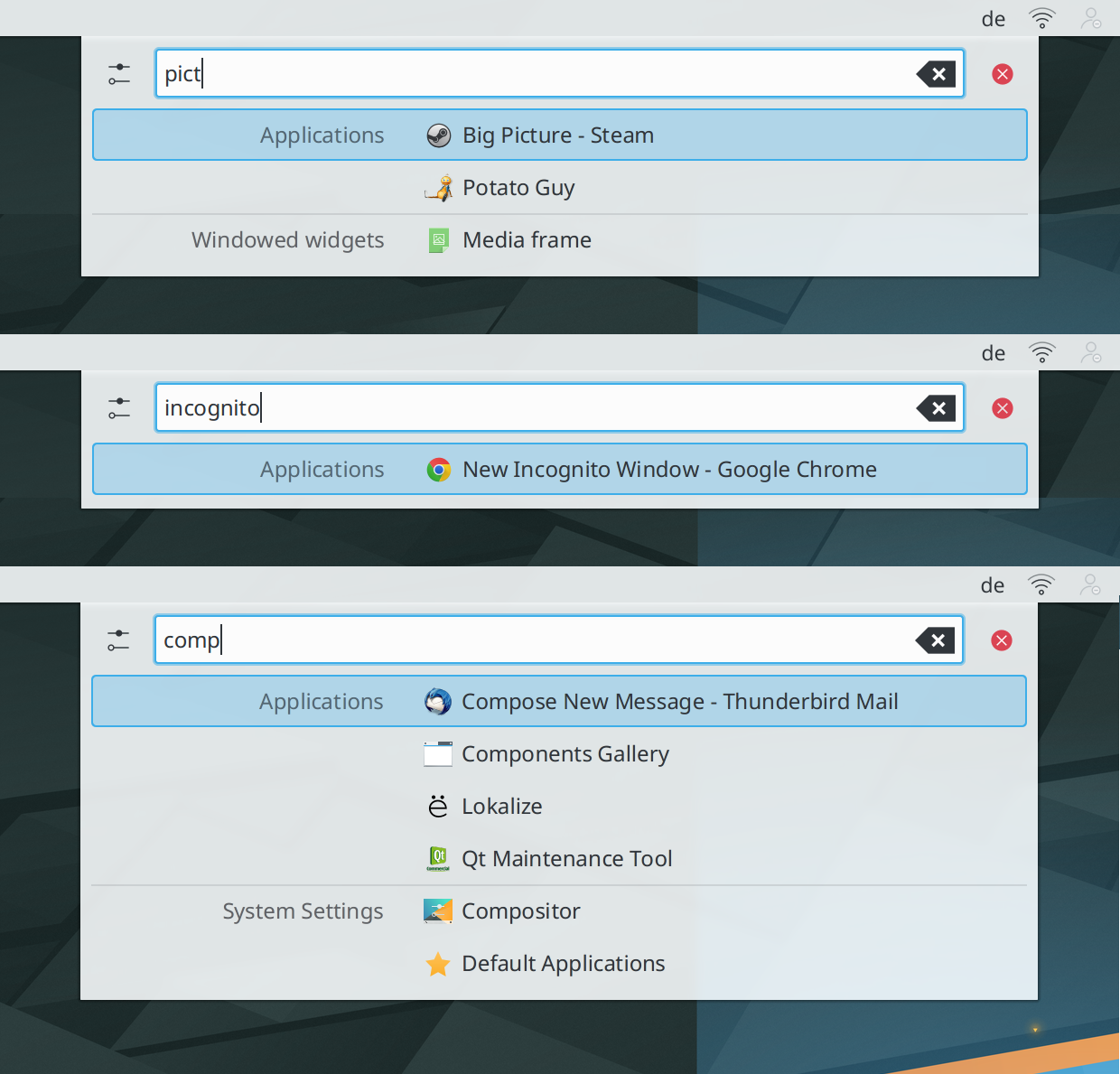
Jump List Actions in KRunner
In our previous release we added Jump List Actions for quicker access to certain tasks within an application. This feature has been extended and those actions are also found through KRunner now.
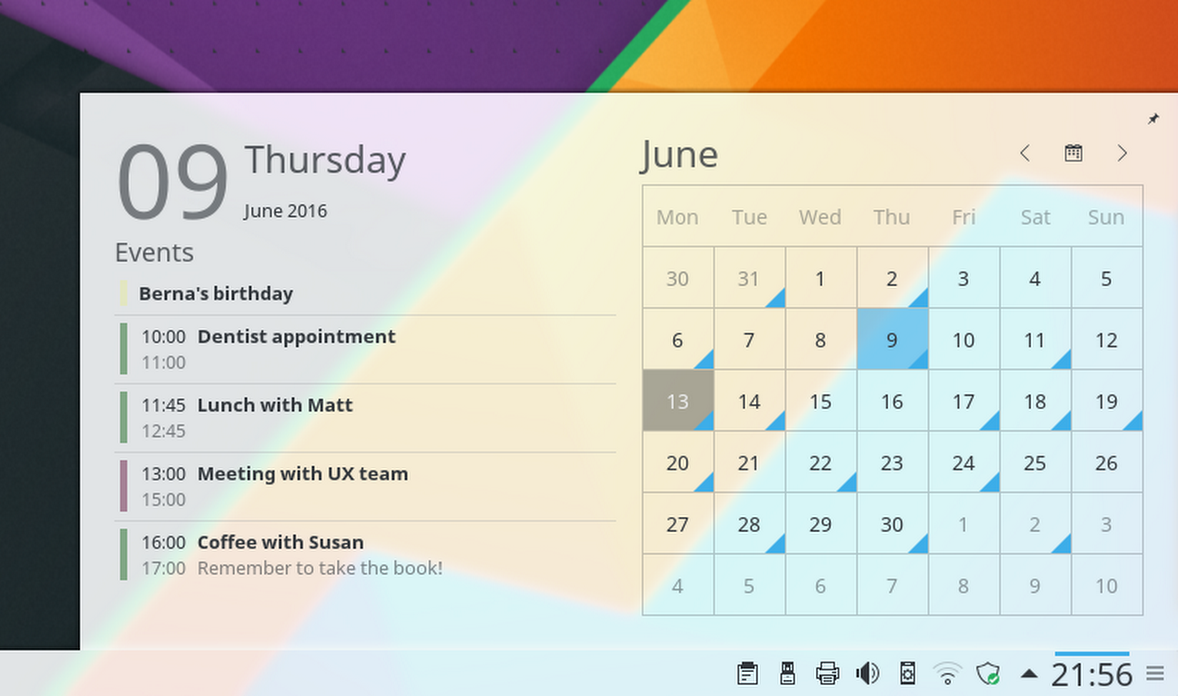
Agenda Items in Calendar
Plasma 5.7 marks the return of the agenda view in the calendar, which provides a quick and easily accessible overview of upcoming appointments and holidays.
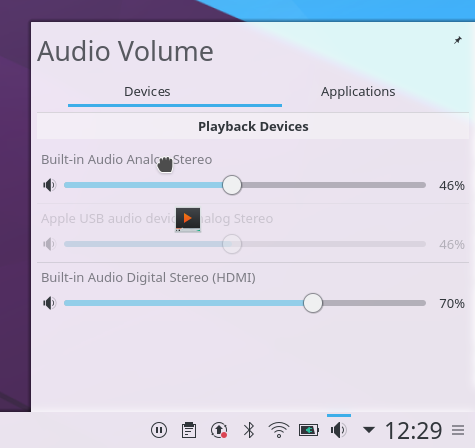
Dragging Application to Audio Device
Many improvements have been added to the Volume Control applet: it gained the ability to control volume on a per-application basis and allows you to move application output between devices using drag and drop. Also implemented is the ability to raise the volume above 100%.
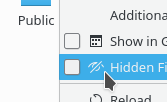
Icons Tint to Match Highlight
For improved accessibility, Breeze icons within applications are now tinted depending on the color scheme, similarly to how it's done within Plasma. This resolves situations where our default dark icons might show up on dark surfaces.
The Kiosk Framework provides means of restricting the customazibility of the workspace, in order to keep users in an enterprise or public environment from performing unwanted actions or modifications. Plasma 5.7 brings many corrections about enforcing such restrictions. Notably, the Application Launcher will become read-only if widgets are locked through Kiosk policies, i.e. favorites are locked in place and applications can no longer be edited. Also, the Run Command restriction will prevent KRunner from even starting in the first place.
The System Tray has been rewritten from scratch to allow for a simpler and more maintainable codebase. While its user interface has only seen some minor fixes and polishing, many issues caused by the complex nature of the applet housing applets and application icons within have been resolved.
Similarly, the task bar has gained a completely revamped backend, replacing the old one that has already been around in the early days of our workspace. While the old backend got many features added over the period of time it was used, the new one has a remarkably better performance and could be engineered more cleanly and straight-forward as the requirements were known beforehand. All of this will ensure a greatly increased reliability and it also adds support for Wayland which was one of the most visible omissions in our Wayland tech previews.
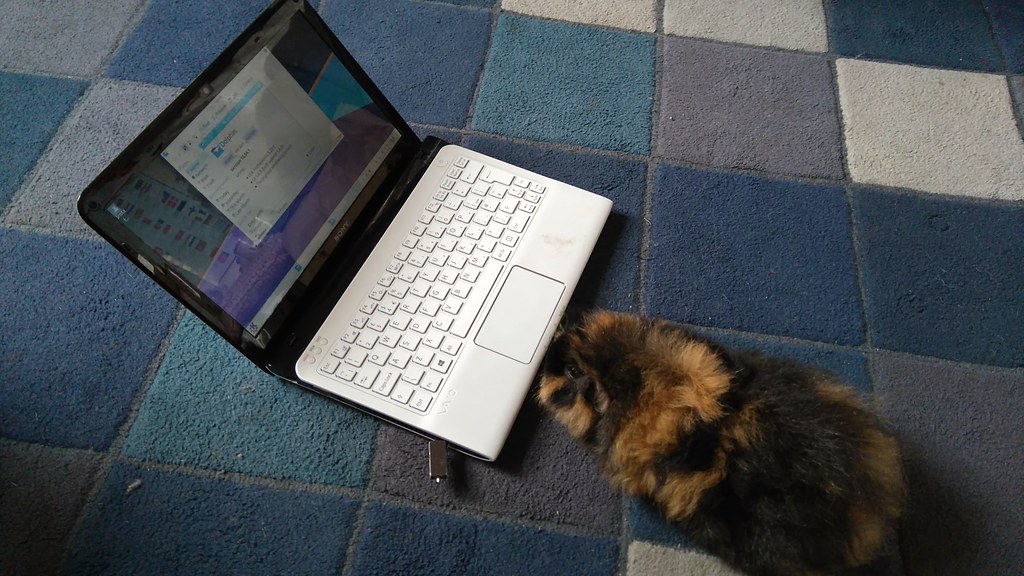
Betty the Fuzzpig Tests Plasma Wayland
This release brings Plasma closer to the new windowing system Wayland. Wayland is the successor of the decades-old X11 windowing system and brings many improvements, especially when it comes to tear-free and flicker-free rendering as well as security. The development of Plasma 5.7 for Wayland focused on quality in the Wayland compositor KWin. Over 5,000 lines of auto tests were added to KWin and another 5,000 lines were added to KWayland which is now released as part of KDE Frameworks 5.
The already implemented workflows got stabilized and are ensured to work correctly, with basic workflows now fully functional. More complex workflows are not yet fully implemented and might not provide the same experience as on X11. To aid debugging a new debug console got added, which can be launched through KRunner using the keyword “KWin” and integrates functionality known from the xprop, xwininfo, xev and xinput tools.
Other improvements include:
Virtual Keyboard Support in Plasma Wayland
View full changelogThe easiest way to try it out is with a live image booted off a USB disk. Docker images also provide a quick and easy way to test Plasma.
Download live images with Plasma Download Docker images with PlasmaDistributions have created, or are in the process of creating, packages listed on our wiki page.
Note that packages of this release might not be available on all distributions at the time of this announcement.
Package download wiki pageYou can install Plasma directly from source.
Community instructions to compile it Source Info PageYou can give us feedback and get updates on our social media channels:
Discuss KDE on the KDE Forums.
You can provide feedback direct to the developers via the #Plasma Matrix channel, Plasma-devel mailing list or report issues via Bugzilla. If you like what the team is doing, please let them know!
Your feedback is greatly appreciated.
KDE is a Free Software community that exists and grows only because of the help of many volunteers that donate their time and effort. KDE is always looking for new volunteers and contributions, whether it is help with coding, bug fixing or reporting, writing documentation, translations, promotion, money, etc. All contributions are gratefully appreciated and eagerly accepted. Please read through the Supporting KDE page for further information or become a KDE e.V. supporting member through our Join the Game initiative.
KDE is an international technology team that creates free and open source software for desktop and portable computing. Among KDE’s products are a modern desktop system for Linux and UNIX platforms, comprehensive office productivity and groupware suites and hundreds of software titles in many categories including Internet and web applications, multimedia, entertainment, educational, graphics and software development. KDE software is translated into more than 60 languages and is built with ease of use and modern accessibility principles in mind. KDE’s full-featured applications run natively on Linux, BSD, Windows, Haiku, and macOS.
Trademark Notices.
KDE® and the K Desktop Environment® logo are registered trademarks of KDE e.V..
Linux is a registered trademark of Linus Torvalds. UNIX is a registered trademark of The Open Group in the United States and other countries.
All other trademarks and copyrights referred to in this announcement are the property of their respective owners.
For more information send us an email: press@kde.org